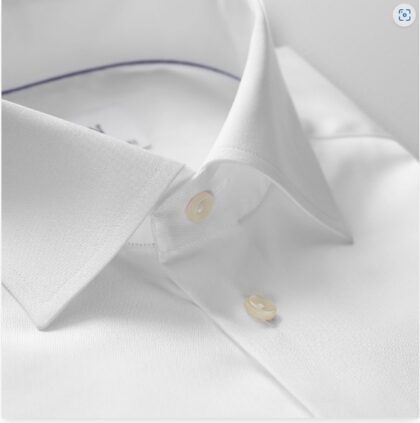Building Your Business Casual Wardrobe: Tips For Men

Whether you’re entering the professional world for the first time as a recent graduate or you’re embracing a brand new career path, you might be confused about what constitutes appropriate dress in the workplace. To be sure, wardrobe guidelines have changed a lot in recent years. Although 47% of senior managers interviewed in a 2016 survey revealed that they felt their employees dressed “too casually,” the reality is that many American workplaces no longer require their staff to wear suits and ties.
In fact, a business casual wardrobe is typically considered the standard for many professionals in 2021. But what exactly does that involve? Let’s take a closer look at how “business casual” is defined and explore some must-have style elements that you’ll need to own.
What Does Business Casual Really Mean?
“Business casual” is one of those terms that you’ve probably heard before, but you might not be able to put your finger on what it actually means. It doesn’t help that there’s not a clear-cut definition for what constitutes business casual. Generally speaking, business casual includes elements of more traditional businesswear mixed with relaxed, less formal pieces.
Of course, what’s deemed appropriate business casual dress can vary from workplace to workplace. Most employers will provide a handbook for workers that contains a dress code policy. This can be used as a reference that can further guide employee wardrobe choices and outline expectations. Keep in mind that, in a job setting, it’s always better to err on the side of formality. Dressing too formally won’t reflect poorly on you as an employee, but dressing too casually could. If you’re going in for an interview or starting a brand new job, you’ll probably want to avoid wearing men’s jeans (unless you’re explicitly told that’s the standard) and opt for some men’s casual trousers and a button-up shirt instead.
With that in mind, let’s take a closer look at some of the essentials you’ll need to build your business casual wardrobe.
What Are Some Business Casual Staples All Men Need?
Every workplace might define business casual a bit differently, but there are some styles that are universally acknowledged as wardrobe staples. These include:
- Button-down shirts in a solid color, subtle pattern or muted check
- Polo shirts or half-zip fleeces or vests
- Crew neck sweaters (to be worn over a dress shirt)
- Blazers or sport coats
- Men’s casual trousers made of cotton or wool
- Close-toed shoes with dark dress socks
- Dark belt
- Ties (optional)
Business Casual selections
-
All Cotton Twill, Washable$265.00
On the other end of the spectrum, there are a few types of garments that should not be worn in a business casual setting. When building a business casual wardrobe, you should steer clear of including:
- Ripped or distressed jeans for men
- Tank tops or casual short-sleeved t-shirts
- Flip-flops or sandals
- Shorts
- Anything with clashing patterns or blinding colors
- Clothing with stains or wrinkles
If you stick to the must-haves and avoid these mistakes, you’ll have a good starting point from which you can build your business casual wardrobe. That said, you’ll want to maintain a bit of flexibility. Here are a few simple rules to follow if you want to make a great first impression with your business casual attire.
- Mimic the Manager: When in Rome, do as the Romans do. When you’re starting a new job, you probably won’t be too far off base if you use your boss or your manager as a point of reference. While they might dress a bit more formally than other employees do, that could give you an edge in their eyes. Dress for the job you (eventually) want and you might impress the Powers That Be. Of course, be sure to observe how other employees are dressing and make adjustments to align with the standards of your workplace as you become more comfortable.
- Consider Your Industry: Different industries will often have slightly different standards for business casual dress. It might be frowned upon to wear a shirt with a loud pattern or casual trousers for men in a unique color if you’re working in finance or healthcare. But if you’re a graphic designer or working in entertainment, more fashionable pieces might be the standard. Likewise, those who work the tech industry might be more accustomed to even more casual dress in the workplace; sneakers, band tees, and even hooded sweatshirts aren’t out of the ordinary. That said, you should still invest in some versatile men’s casual trousers and button-up shirts that could work for almost any occasion.
- When In Doubt, Ask: Employers tend to like hires who take the initiative to ask questions. During an interview or before your first day on the job, ask about any specific dress code policies or how the company culture impacts the choice of dress in the workplace. While you shouldn’t ask your manager to approve your outfit, it’s usually fine to ask about whether they’d prefer you opt for men’s casual trousers over jeans or whether wearing a suit and tie is standard. You’ll also want to look the company up on social media to get a feel for the general vibe and how employees dress on a daily basis.
With this information in mind, you’ll be well on your way to building your ideal business casual wardrobe. To learn more about our men’s casual trousers and other must-haves, please get in touch with us today.


